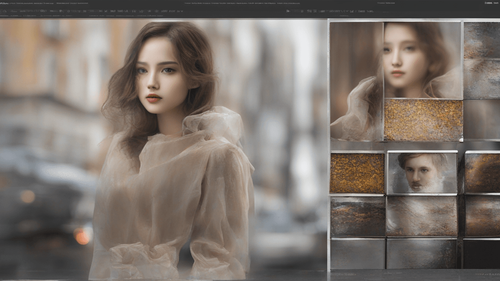
Introduction
In the digital age, the realm of artistic expression has expanded beyond traditional methods. Thanks to the marvels of Artificial Intelligence (AI), turning ordinary images into captivating works of art is now within reach. With the power of AI-driven algorithms, the process of transforming images into stunning artistic creations has opened up a world of creative possibilities. In this article, we delve into the fascinating world of turning images into art using AI, exploring its techniques, applications, and impact.
How Does Turn Image into Art AI Work?
Understanding the Neural Style Transfer Technique
Neural Style Transfer (NST) is the heart of turning images into art using AI. This technique involves merging the content of one image with the artistic style of another. The process is governed by deep neural networks that extract features from both the content and style images, recombining them to produce a unique artwork that seamlessly blends the two.
Leveraging Convolutional Neural Networks (CNNs)
Convolutional Neural Networks play a pivotal role in NST. These networks are adept at recognizing patterns in images and are used to extract intricate details from the content and style images. By applying various layers of CNNs, the algorithm identifies textures, shapes, and structures that contribute to the final artistic output.
Iterative Optimization for Artistic Perfection
The process of turning images into art through AI is an iterative optimization process. The algorithm continuously adjusts the output image to minimize the difference between its content features and those of the style image. This gradual refinement results in an artwork that captures the essence of the style while retaining the essence of the original image.
Applications of Turn Image into Art AI
Artistic Creations and Self-Expression
Unleash your inner artist by transforming personal photos into unique artworks. AI enables individuals to experiment with different artistic styles, from impressionism to cubism, and create one-of-a-kind masterpieces that reflect their creative vision.
Enhancing Visual Marketing and Branding
Businesses can leverage turn image into art AI techniques to create visually captivating marketing materials. By infusing brand imagery with various art styles, companies can establish a distinctive visual identity that resonates with their target audience.
Reviving Historical Photos
Preserving historical photographs becomes more engaging through AI-generated art. By breathing new life into aged photos with modern art styles, historical moments can be experienced with a fresh perspective, making them relevant to newer generations.
Educational and Entertainment Purposes
AI-powered art generation serves as an engaging educational tool. Students can learn about different art movements by applying them to their images, fostering an interactive and immersive learning experience. Additionally, AI-generated art can be incorporated into video games, movies, and animations, adding a unique aesthetic dimension.
The Ethical Considerations
Maintaining Originality and Attribution
While AI enables transformative creativity, ethical concerns arise regarding the originality of the created artwork. Artists and users must consider proper attribution and respect copyright principles when sharing or utilizing AI-generated art.
Preserving Human Artistic Contribution
AI is a tool that augments human creativity, but it's essential to preserve the value of traditional artistic contributions. Combining human expertise with AI technology can lead to unparalleled artistic accomplishments.
FAQs about Turn Image into Art AI
Is the AI capable of understanding the emotions behind an image's content?
AI excels at analyzing visual features but lacks emotional understanding. It can capture mood through style transfer but doesn't grasp the underlying emotional context.
Can I customize the degree of style infusion in my image?
Yes, most turn image into art AI tools offer customization options. You can adjust parameters to control the intensity of style incorporation, resulting in a tailored artistic output.
Is there any limit to the image resolution for AI-generated art?
The image resolution depends on the AI model's capabilities. High-resolution images might demand more computational resources and time for processing.
Do AI-generated artworks have value in the art market?
The value of AI-generated art is a subject of debate. While some AI artworks have been sold at auctions, the art community continues to discuss the fusion of technology and artistic worth.
Can AI-created art be considered plagiarism?
AI-created art raises questions about originality. While AI plays a role in creation, acknowledging the input from both the AI and the user is crucial to avoiding potential plagiarism issues.
What's the future of turn image into art AI?
The future promises further refinement of AI techniques, leading to more sophisticated and customizable artistic transformations. AI's integration with other creative tools could revolutionize the art landscape.
Conclusion
In the realm of art, the intersection of technology and creativity has birthed new possibilities. Turning images into art through AI offers a captivating journey, where individuals can explore diverse artistic styles, reimagine historical moments, and enhance their self-expression. While AI contributes to this transformation, it's essential to recognize the symbiotic relationship between human artistic vision and technological innovation. As we traverse this artistic frontier, the fusion of human and AI creativity promises to yield ever more astounding results. Embrace the turn image into art AI revolution and unlock your inner artist with the touch of a button!